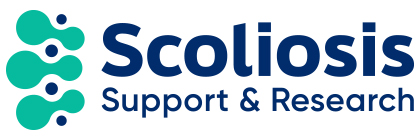Lead Researchers:
Fraje Watson
Julian Leong
Institutions:
University College London
Royal National Orthopaedic Hospital
Aims:
- Test the ability of a commercially available wearable to objectively track change in spinal deformity severity in scoliosis.
- Develop existing wearable using novel techniques for improved functional spinal measurement.
- Correlate wearable outcomes with existing outcome measures.
- Provide objective, clinically useful information to help enable distance medicine and reduce radiographic frequency.
Summary:
A pilot study used an orthotic brace to model scoliosis in 10 healthy participants (6-7). Dynamic balance data was collected in the Royal National Orthopaedic Hospital (RNOH) gait laboratory under 3 conditions; ‘Control’, ‘Brace Straight’ and ‘Brace Tilt’ positions. This study showed statistically significant differences in the balance ability when performing tasks in the Brace Tilt condition compared to Control and Brace Straight conditions.
This project will consist of 2 clinical observational studies; a Case-Control, and a Crossover study. In each study the gait and balance of participants will be assessed using a commercially available wearable device (Notch) and a developing wearable system. These two systems will be compared and validated against a gold-standard motion capture gait analysis system at the RNOH.
CASE-CONTROL STUDY
Case participants will be patients diagnosed with scoliosis at the RNOH in the last 6 months who have not yet started treatment. Control participants will be matched and recruited from the local area and will be examined by a Consultant to ensure they are free from orthopaedic and neurological abnormalities. Participants will complete the gait and balance activities once. Statistical analysis will compare the gait and balance ability of Case and Control participants, in order to detect a baseline difference between populations. Power calculations suggest the need for 24 participants; 12 Cases and 12 Controls.
CROSSOVER STUDY
Participants will be patients diagnosed with scoliosis at the RNOH in the last 6 months and prescribed treatment with an orthotic brace. Participants will attend 2 data collection sessions; one wearing their prescribed orthotic brace (having worn it for ≥18 hours), and the other without their brace (having not worn it for ≥18 hours). The order will be randomised. During each session participants will repeat the same gait and balance activities under the designated brace condition. Statistical analysis will compare the gait and balance ability of participants with and without their braces, in order to detect a ‘treatment effect’. Gait and balance measurements from Case and Crossover participants will be correlated to radiographic Cobb angle to detect linear sensitivity to curve magnitude. Power calculations suggest the need for 19 participants.
WEARABLE DEVELOPMENT
Complementary additions will be developed and added to the commercial wearable device to further aid and improve assessment of dynamic balance in scoliosis. This could include items such as; printable circuitry and strain sensors embedded into fabric, smart insoles and accelerometers. These additions would aim to improve sensitivity and specificity of the wearable.
PATIENT & PUBLIC INVOLVEMENT
This will consist of interviews, focus groups and workshops involving children with scoliosis and their parent/guardian. These sessions will focus of the wear-ability and use-ability of the wearable systems, discussions about the burden of assessment at home and patient input into the practicalities of study design.
FUTURE
This project will lead to a clinical longitudinal study following patients diagnosed with scoliosis at the RNOH and scheduled for surgical correction to compare the gait and balance measurements over time and test for correlation with existing outcome measures (radiographs, clinical examination, questionnaires).
